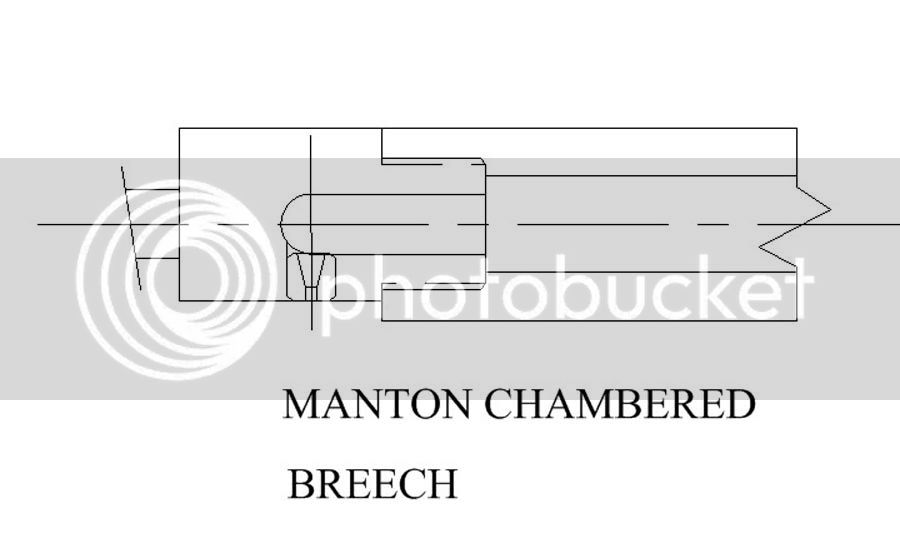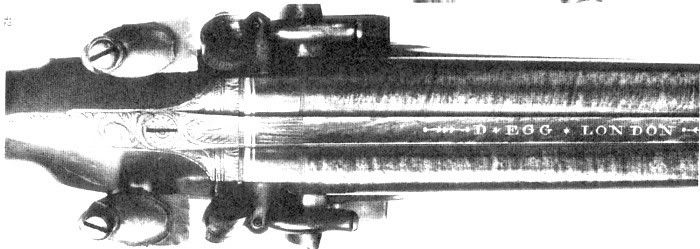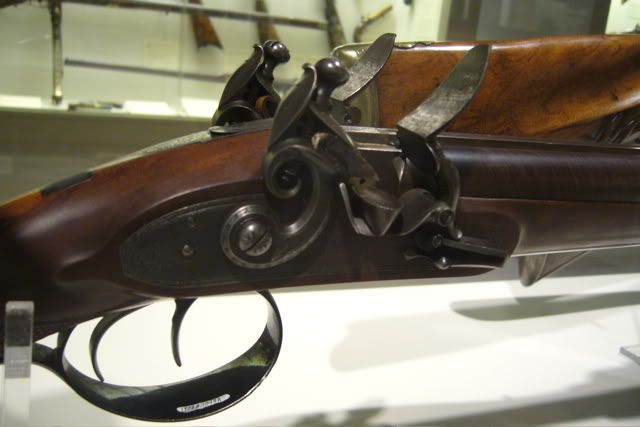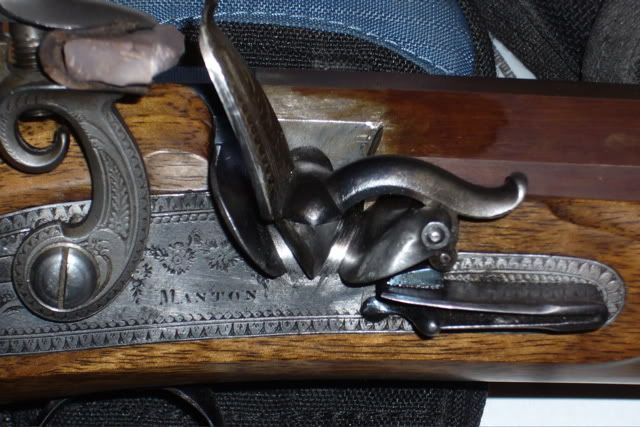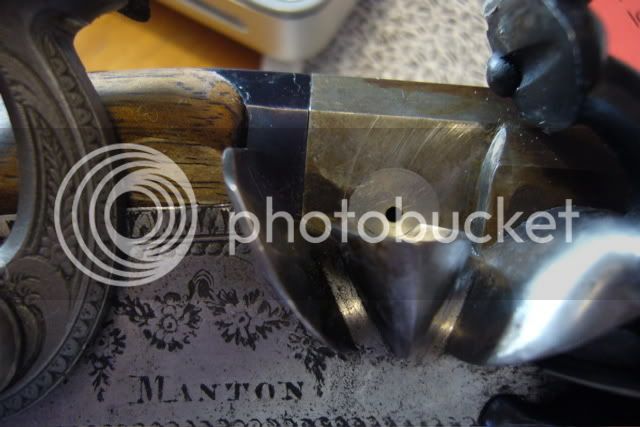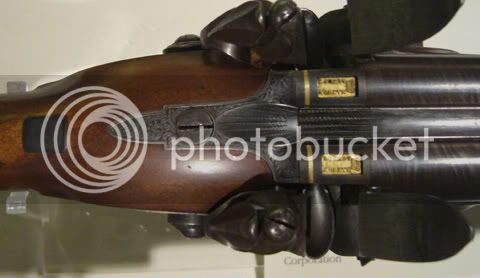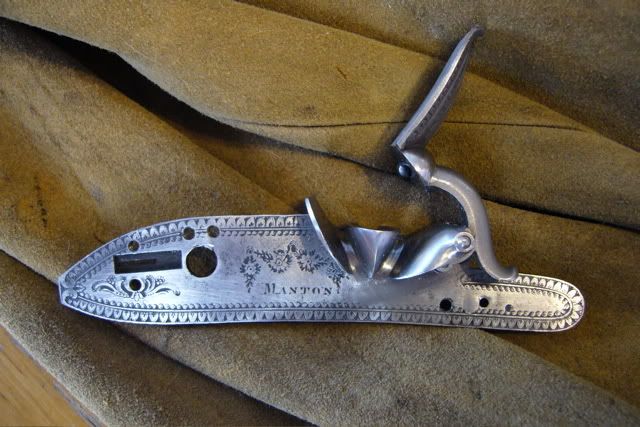This long winded discussion may shed some light on your question.
Joseph Manton is credited with some interesting Patents. In 1806 he Patented the Double Barrel elevated rib which greatly improved long range accuracy.
He Patented a Flintlock which had “gravitating stops” on the outside of the lockplate.
These stops were designed to block the possible falling of the cock when the gun was in a vertical position.
By doing this, the gun could be safely loaded without fear of an accidental discharge. When the gun was returned to a position other than vertical, gravity caused the stops to fall and free the cock(s) for normal use.
As Nock had Patented his famous “Patent Breech” which used a small “anti-chamber” to create a jet of fire into the primary powder charge for improved ignition, I have read (although I cannot find it at the moment) that Joseph Manton created a Chambered Breech (a smaller than bore sized chamber concentric with the bore) and this design allowed him to move the locks inboard while keeping the length of the vent short for fast ignition.
I don’t know that he Patented this design but based on his numerous other patents he very likely did.
Based on my reading this drawing depicts what I imagine it to look like.
Although this gun is by Egg, it shows the inset locks that would be used with this style of breech.
Manton often used Platinum vent liners on his fowlers.
Alexander John Forsyth LL,D is generally credited with the invention of the Percussion ignition system however his early designs for achieving this was not the currently used Percussion cap.
There are many candidates for taking credit for the final answer of the simple cap and according to W.W, Greener in his book
THE GUN AND ITS DEVELOPMENT Joshua Shaw of Philadelphia, Pa. who used a steel cap in 1814, a pewter cap in 1815 and a copper cap in 1816.
At roughly the same time, J. Manton was building percussion fowlers that were using his Patent “tube” form of a percussion cap. A Colonel Peter Hawker wrote that he had J. Manton make a “perforated nipple and the detonating powder in the crown of a small cap...”
According to this writing “Thus Joe (Manton) who led the fashion for all the world, sent out a few copper-cap guns and I know with some degree of reluctance. The trade, finding he had then deviated from his own patent (the tube), adopted this plan, and it proved to answer so well that we now see it in general circulation.”




